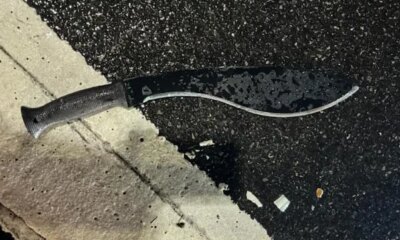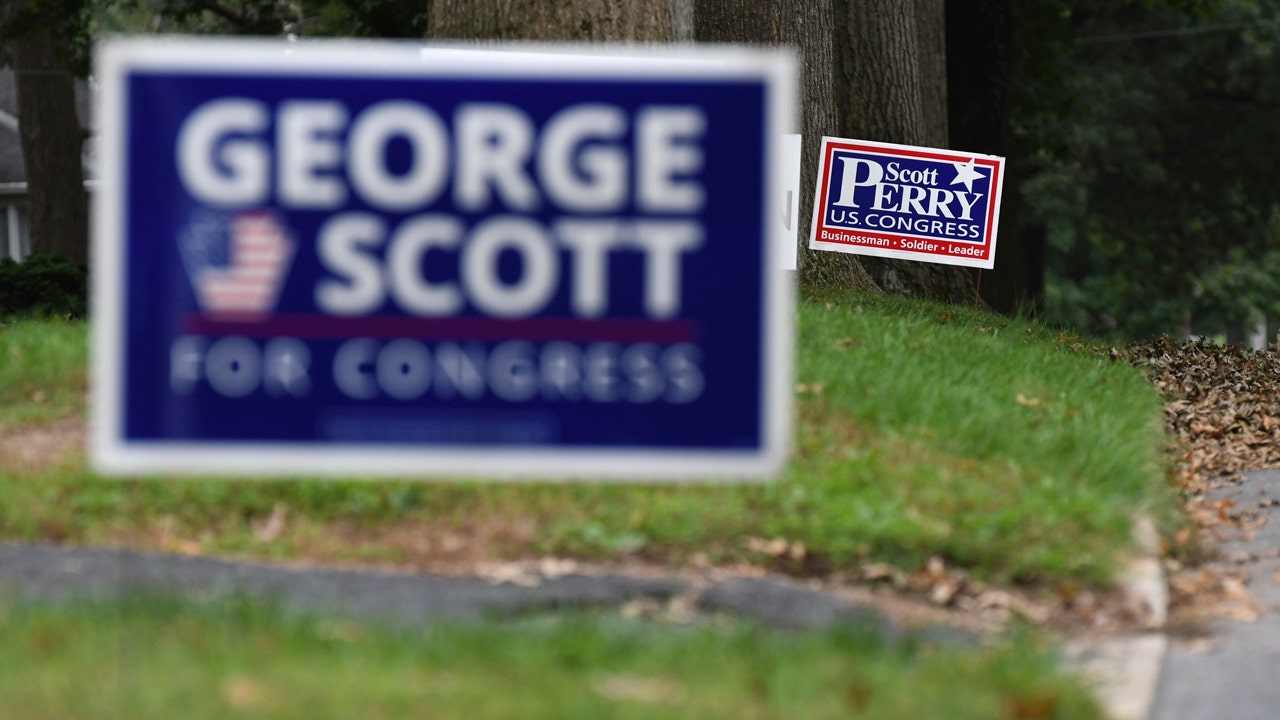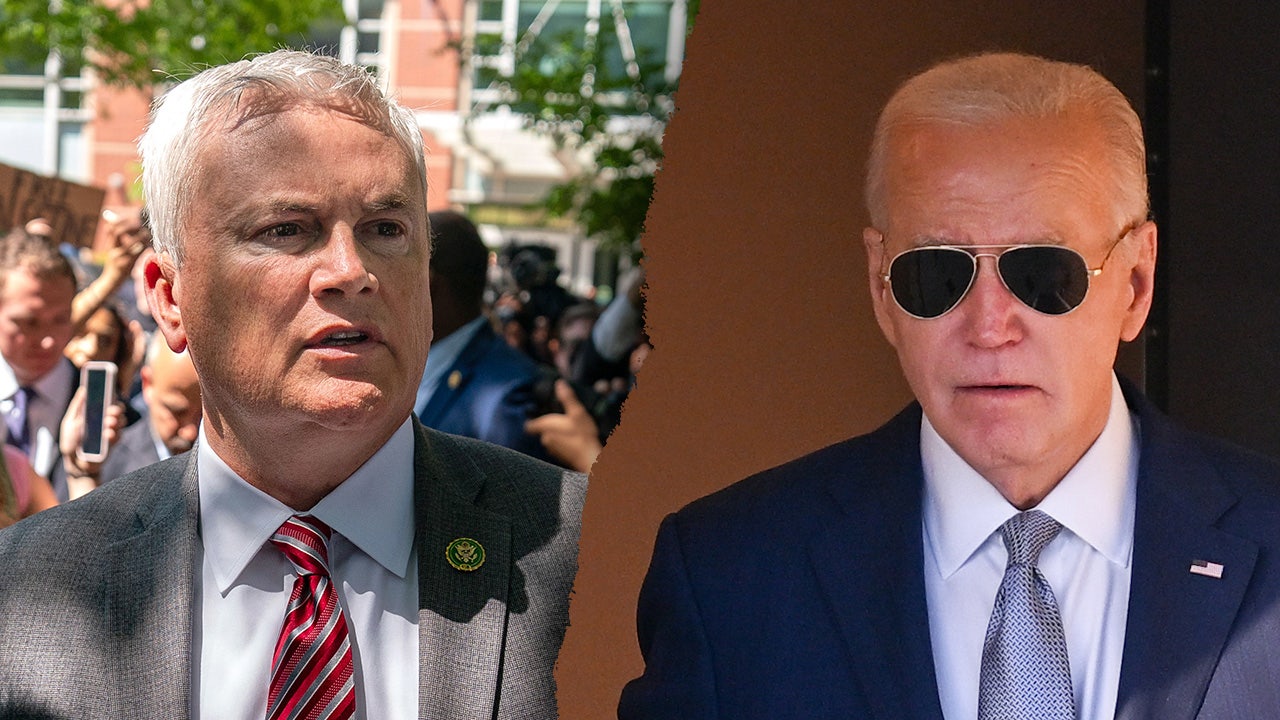Entertainment
Paramount Global CEO Bob Bakish expected to leave the company

Paramount Global Chief Executive Bob Bakish is expected to be ousted from the company, according to two sources familiar with the matter.
Bakish’s departure comes as Paramount’s future hangs in the balance.
The company is currently in a 30-day exclusive negotiating period with tech scion David Ellison, whose Skydance Media has teamed up with investment firms RedBird Capital and KKR to acquire Paramount controlling shareholder Shari Redstone’s National Amusements holding company. That exclusive negotiating period ends in early May.
Under a complicated two-step proposition, Ellison would gain control of the media company, which includes the storied Melrose Avenue Paramount movie studio, broadcast network CBS and various cable channels such as MTV and Comedy Central. Ellison’s camp would pay $2 billion for National Amusements, and Paramount would then absorb Skydance.
But shareholders have balked at reports of Ellison’s proposal, arguing that it would value Redstone’s shares at a premium while diluting the value for them. Several shareholders have said they’d prefer a deal with private equity firm Apollo Global Management, which is offering $26 billion, including the assumption of Paramount’s debt.
Bakish is said to have been opposed to the Skydance transaction. Redstone, according to one person familiar with the matter, has also been frustrated with certain of Bakish’s decisions, including not selling Showtime. The company, meanwhile, has lost massive amounts of money on its streaming service, Paramount+.
The company now known as Paramount Global formed in 2019 from the merger of Viacom Inc. and CBS Corp. But the combination never convinced Wall Street of its promise. In the last year alone, Paramount Global’s stock has lost nearly half its value.
Recently, Sony has engaged in talks with Apollo to potentially join its bid, which could give the Japanese entertainment and electronics company a significant majority stake in Paramount.
CNBC and Variety first reported the news of Bakish’s ouster. CNBC, in its report, said Bakish could be fired as soon as Monday, citing anonymous sources.
Representatives for Paramount declined to comment.
Bakish was named CEO in 2016, after a tumultuous year for the company then known as Viacom. At the time, the company’s stock had fallen 45% in two years as Viacom faced declining ratings at some of its key networks, including Comedy Central and MTV, as well as struggles at its Paramount Pictures film studio.
After Redstone orchestrated the merger of Viacom with CBS, Bakish became CEO of the combined enterprise.
Bakish had been a Viacom executive since 1997. Before that, he was a management consultant with an MBA from Columbia Business School.
In 2016, Redstone described Bakish as “an exemplary forward thinker” who “embraces disruption and brings teams along with him.”

Movie Reviews
AutoMatters & More: Movie review: Thumbs up for The Fall Guy
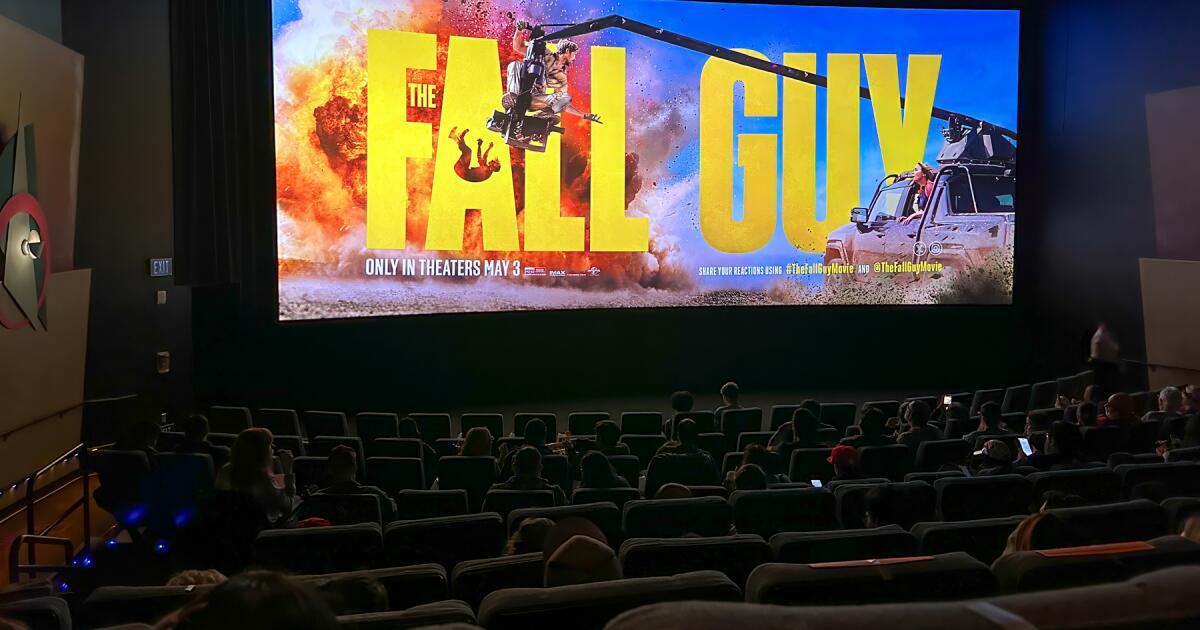
Returning to the big screen after his starring role in the Barbie movie, Ryan Gosling stars in The Fall Guy — an action-packed tribute to stunt performers in the movies.
Gosling plays the role of Colt Seavers — a stuntman who “gets blown up, shot, crashed, thrown through windows and dropped from the highest of heights, all for our entertainment. And now, fresh off an almost career-ending accident, this working-class hero has to track down a missing movie star, solve a conspiracy and try to win back the love of his life (Emily Blunt starring as Jody Moreno, director of the movie) while still doing his day job. What could possibly go right?”
Ryan Gosling and Emily Blunt
(Universal Pictures)
The Fall Guy includes the movie industry’s first-ever film credit of Stunt Designer, received by Chris O’Hara, president of Stunts Unlimited, and who is renowned as a Stunt Coordinator and second unit director. The Stunt Designer moniker goes beyond the traditional title of Stunt Coordinator (an official Screen Actors Guild credit that is also recognized by the Directors Guild of America). This credit represents a new benchmark that accurately reflects “the high-level artistic contribution of world-class Stunt Coordinators like O’Hara. These are artists who do more than coordinate the logistics of stunts; they design and create them.”
“Stunt Designers are the creative architects behind fight scenes, high falls, and more, and deserve to be recognized for the creative leadership of their contributions,” said David Leitch, director, blockbuster filmmaker and a former stunt coordinator.
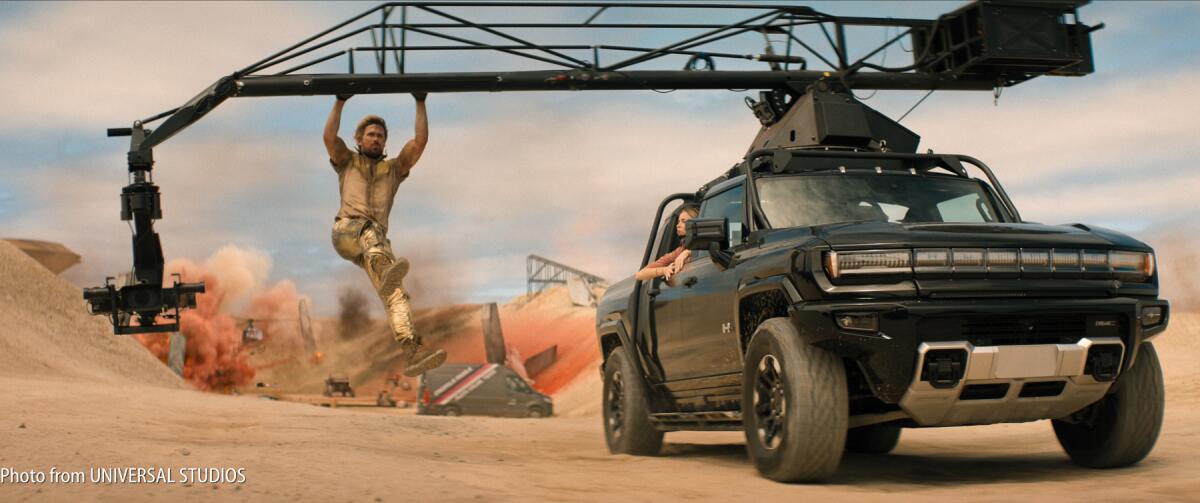
The fall guy on a vehicle-mounted arm.
(Universal Pictures)
The Fall Guy was originally a TV series from the ‘80s. It “was a reflection of that era, celebrating the cowboy spirit of stunt work,” director David Leitch says. “Back then, stunts were about sheer toughness, fearlessness, and guts. While there were tricks of the trade, these stunts still came with a lot of pain. My journey in the stunt world began during the transition from this old-school era to the modern era where stunt work began embracing new technologies and practices. As I entered the industry, visual effects and special effects were starting to revolutionize the stunt world. Wire rigs, the removal of those wires via VFX and other innovations were transforming the way stunts were performed. While shooting The Matrix, I had the opportunity to witness the cutting edge of technology and the collaborative efforts that were shaping the future of stunts. For me, it was natural to embrace both sides of stunt performing—the old-school toughness and the evolving world of visual effects. So, now, with The Fall Guy, I’m paying tribute to my early career journey as a stunt performer. While we incorporate some nods to the role of visual effects, the film maintains a raw and practical element in every stunt. With this film, we aimed to deliver action that was true to the spirit of the stunt community by incorporating techniques that have become somewhat of a lost art.”
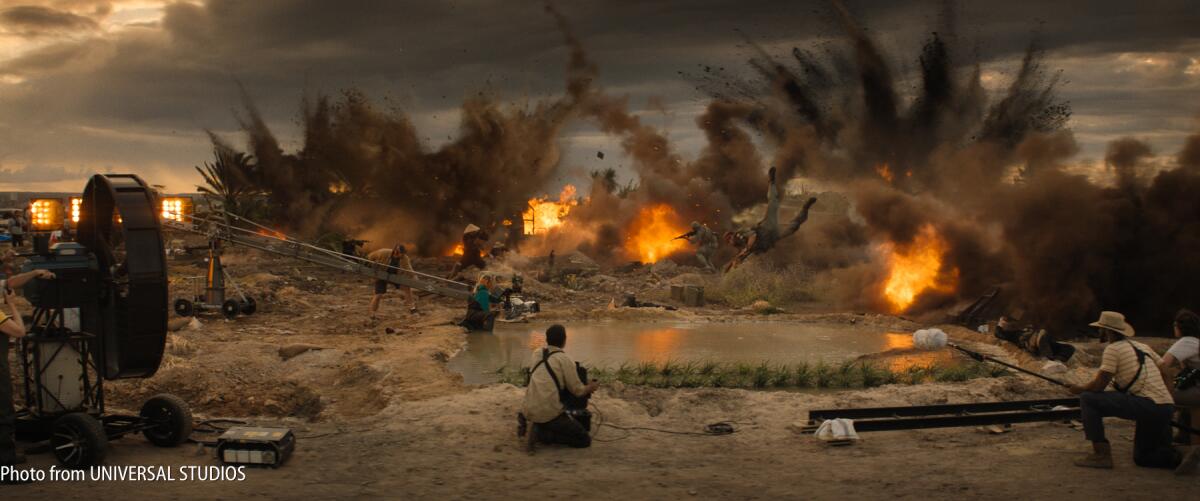
THE FALL GUY, directed by David Leitch
(Universal Pictures)
The cannon roll was a particularly spectacular stunt featured in The Fall Guy. “Stunt double Logan Holladay broke the Guinness World Record for cannon rolls in a car with eight and a half rolls.”
These days, sequences like the Alma/Colt chase sequence, in which a garbage truck dragged Ryan Gosling on a spinning bin through the streets of Sydney, Australia, included a thrilling scene on the iconic Sydney Harbour Bridge that “would normally be done with blue screen,” but “the team decided to film the scene entirely practically” — old school.
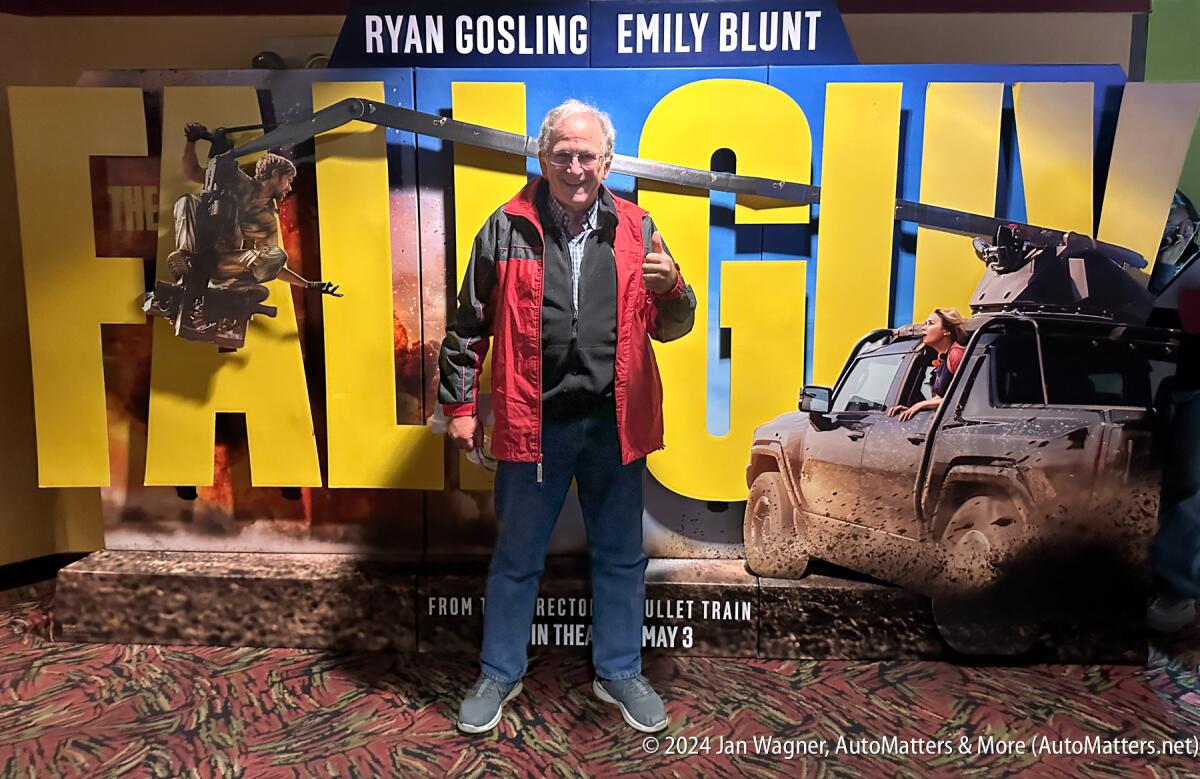
Jan Wagner in the theater lobby.
(Jan Wagner)
Another exciting stunt was a jaw-dropping 225-foot car jump, “performed by seasoned driver Logan Holladay in a specially designed vehicle, crafted for practical, in-camera authenticity that could handle such an extreme leap. At the apex of the jump, the truck was close to 80 feet in the air.
Other wild stunts included a boat jump, a high fall from a helicopter, numerous fights, fiery explosions and much, much more. Multiple costume variations were required “to address the complexity of action scenes.” Oh, and be sure to stick around for the credits to see a cameo that you will not want to miss. Thumbs up!
To see a trailer for The Fall Guy and to purchase tickets, visit the official site at: https://www.thefallguymovie.com.
To explore a wide variety of content dating back to 2002, with the most photos and the latest text, visit “AutoMatters & More” at https://automatters.net. Search by title or topic in the Search Bar in the middle of the Home Page, or click on the blue ‘years’ boxes and browse.
Copyright © 2024 by Jan Wagner – AutoMatters & More #838
Entertainment
At KTLA, Sam Rubin was a local morning news pioneer who covered Hollywood with zeal

KTLA entertainment reporter Sam Rubin was at the center of a local TV news revolution.
Rubin, who died Friday of a heart attack at 64, became a central member of “KTLA 5 Morning News” soon after its launch on July 8. 1991. The early morning broadcast was a bold experiment: Local news stations had usually focused on their evening newscasts, feeling that morning viewers would be more likely to tune into national programs like NBC’s “The Today Show” or ABC’s “Good Morning America.”
But the Channel 5 broadcast instantly struck a chord with its emphasis on news and events around Los Angeles. Its success was due to its loose approach and a collection of anchors and reporters who interacted with breezy banter.
The original team included anchors Carlos Amezcua and Barbara Beck, weatherman Mark Kriski, traffic reporter Jennifer York and reporter Eric Spillman. Rubin joined the unit three months after its premiere, and he made an instant impression with his energetic delivery and clear enthusiasm for Hollywood news and gossip.
The format became so popular that KTTV Channel 11 soon started its own morning broadcast. The two stations became rivals, turning the local TV landscape into a fierce ratings battleground. Years later, it’s now common for TV stations to have extensive local coverage in the early morning hours.
Amezcua reflected on the legacy of the broadcast during its 20th-anniversary celebration in 2011, which reunited several members of the original team.
“I can’t believe it’s actually been that long,” said Amezcua, who left the station in 2007. “When it started, it was such a scary time, we were sure it was going to be a short-term gig.”
In a separate interview, Rubin said initial ratings for the newscast were so bad “that we were pretty sure we wouldn’t last more than a year.”
He added, “There was just this sense that no one was watching. What we were doing maybe didn’t merit watching. There was this tremendous freedom in letting go. Our boss Joel Tator told us we were all going to get fired anyway, so we might as well do what we want.”
That freedom allowed the on-air talent to be informal in broadcasts, particularly Rubin, who would talk about his wife and daughter. Their home life became part of the self-promotion that often found its way into his reports.
As an entertainment journalist, Rubin’s principal approach was geared toward positive coverage of the subjects he interviewed. He was a favorite of publicists, and his interviews rarely featured probing questions. He would file reports on press junkets that would take him around the world and were paid for by studios, a practice that’s repudiated by members of the press in an effort to provide fair and balanced coverage. But he denied that he was influenced by the free travel or accommodations he enjoyed.
One of Rubin’s most famous segments was one of his most uncomfortable: In an 2014 remote interview with Samuel L. Jackson, who was promoting his new film, a remake of “RoboCop,” Rubin confused the “Pulp Fiction” actor with Laurence Fishburne.
“You’re as crazy as those people on Twitter,” scolded Jackson, pointing a finger at the camera. “I’m not Laurence Fishburne! We don’t all look alike!”
Embarrassed, Rubin tried to make light of the mistake, but a gleeful Jackson continued to tease him.
“You’re the entertainment reporter?” he said to Rubin in an incredulous tone. “You’re the entertainment reporter for this station and you don’t know the difference between me and Laurence Fishburne?”
Rubin frequently projected an edge, which often landed him in hot water inside and outside KTLA.
In 1993, the station’s veteran anchor Hal Fishman threatened to quit his job if station management did not take steps to punish Rubin for what he called “a shocking and appalling slander.” He was angered by Rubin’s joke that Fishman once “wore a skirt for a co-anchor job in Spokane.” It was part of a bit in which Rubin compared Fishman to Dustin Hoffman, who dressed as a woman in the movie “Tootsie.”
In 2004, Rubin was suspended for a week after he made satirical remarks on Monday’s morning news program about the show’s temporary news set, thanking a local high school for sending it to him.
Rubin would also take on-air swipes at Los Angeles Times entertainment coverage and TV columnist Howard Rosenberg, declaring he could do a better job. The Times and KTLA at that time both were owned by Tribune Company.
Regardless of his run-ins and remarks on- and offscreen, for viewers, Rubin managed to maintain an unflappable onscreen image of a television journalist who appreciated his access and enjoyed his job.
Movie Reviews
Movie Review: THE COFFEE TABLE (LA MESITA DEL COMEDOR) – Assignment X
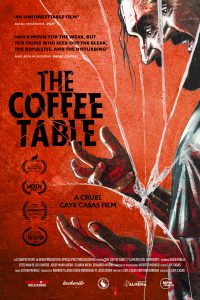
By ABBIE BERNSTEIN / Staff Writer
Posted: May 10th, 2024 / 12:29 PM
THE COFFEE TABLE (LA MESITA DEL COMEDOR) movie poster | ©2024 Cinephobia Releasing
Rating: Not Rated
Stars: David Pareja, Estefanía de los Santos, Josep Riera, Claudia Riera, Gala Flores, Eduardo Antuña, Cristina Dilla, Itziar Castro
Writers: Caye Casas & Cris Borobia
Director: Caye Casas
Distributor: Cinephobia Releasing
Release Date: April 19, 2024 (theatrical); May 14, 2024 (DVD/digital)
THE COFFEE TABLE (LA MESITA DEL COMEDOR) has been variously described as a horror movie and a black comedy. It doesn’t conform to the conventional notion of either of these genres. Rather, it is one answer to the question of what we get when the framework of a farce is placed around an almost literally unspeakable tragedy.
THE COFFEE TABLE has a horrific incident (imagine one of the worst things you can think of; this may or may not be worse than that) that propels what would otherwise be a familiar comedy plot. The tension between these two things keeps us riveted.
In the opening moments, we see María (Estefanía de los Santos) in childbirth. It looks extremely painful.
The rest of the film takes place over the course of a single day. María and her husband Jesús (David Pareja) and their baby son Cayetano are at a furniture store. The salesman (Eduardo Antuña) is pushing them to buy a glass-topped coffee table.
Jesús seems to want the coffee table primarily because María hates it. According to him, she has made most of the choices in their relationship, including when to have a baby (they’re middle-aged, but he wasn’t sure) and what to name the child (Jesús thinks Cayetano is a bad name, with a worse namesake).
The salesman guarantees that the coffee table will change Jesús and María’s lives. He’s just doing his spiel, but he turns out to be absolutely right.
To be clear, THE COFFEE TABLE isn’t a cursed-furniture movie. There’s nothing supernatural of any kind going on here. For that matter, there is no onscreen violence, and relatively little gore. It’s just that it has a confluence of events that most filmmakers wouldn’t dare present.
The actors are all excellent, surprising us within expectations we may have for their characters.
While this is perhaps not the main thrust of THE COFFEE TABLE, director Caye Casas, cowriter Cris Borobia and actor Pareja create a powerfully authentic portrait of severe depression. We feel Jesús’s inability to connect with those around him; he’s barely able to see or hear them through the weight of his pain. While in some movies, this kind of thing can be extraordinarily dull, in THE COFFEE TABLE, it’s mesmerizing, because we compulsively need to know what’s going to happen.
THE COFFEE TABLE should come with some trigger warnings. One is for people who, having experienced severe depression themselves, may find its accurate depiction awakens a sympathetic response that is not easily dismissed when the film ends.
The other trigger warning unfortunately is a massive spoiler. Perhaps the best advice to viewers who are serious about such cautions is that they should avoid THE COFFEE TABLE altogether. For more daring prospective audience members who want to see a well-made film that is certainly unique and never boring, THE COFFEE TABLE is the real deal.
In Spanish, with English subtitles.
Related: Movie Review: FORCE OF NATURE: THE DRY 2
Related: Movie Review: THE FALL GUY
Related: Movie Review: SOMETHING IN THE WATER
Related: Movie Review: I SAW THE TV GLOW
Related: Movie Review: THE THREE MUSKETEERS – PART II: MILADY
Related: Movie Review: BOY KILLS WORLD
Related: Movie Review: BREATHE
Related: Movie Review: GHOSTBUSTERS: FROZEN EMPIRE
Related: Movie Review: THE AMERICAN SOCIETY OF MAGICAL NEGROS
Related: Movie Review: KUNG FU PANDA 4
Related: Movie Review: IMAGINARY
Related: Movie Review: NIGHT SHIFT
Related: Movie Review: T-BLOCKERS
Related: Movie Review: DRIVE-AWAY DOLLS
Related: Movie Review: CELLPHONE
Related: Movie Review: NO WAY UP
Related: Movie Review: LISA FRANKENSTEIN
Related: Movie Review: OUT OF DARKNESS
Related: Movie Review: ARGYLLE
Related: Movie Review: DEPARTING SENIORS
Related: Movie Review:MILLER’S GIRL
Related: Movie Review: CULT KILLER
Related: Movie Review: THANKSGIVING
Related: Movie Review: HELLHOUNDS
Related: Movie Review: SUNRISE
Related: Movie Review: MEAN GIRLS
Related: Movie Review: NIGHT SWIM
Related: Movie Review: MAESTRO
Follow us on Twitter at ASSIGNMENT X
Like us on Facebook at ASSIGNMENT X
Article Source: Assignment X
Article: Movie Review: THE COFFEE TABLE (LA MESITA DEL COMEDOR)
Related
Related Posts:
-

 Politics1 week ago
Politics1 week agoThe White House has a new curator. Donna Hayashi Smith is the first Asian American to hold the post
-

 News1 week ago
News1 week agoPolice enter UCLA anti-war encampment; Arizona repeals Civil War-era abortion ban
-

 Politics1 week ago
Politics1 week agoAdams, NYPD cite 'global' effort to 'radicalize young people' after 300 arrested at Columbia, CUNY
-

 World1 week ago
World1 week agoTurkish police arrest hundreds at Istanbul May Day protests
-

 News1 week ago
News1 week agoVideo: Police Arrest Columbia Protesters Occupying Hamilton Hall
-
)
) Movie Reviews1 week ago
Movie Reviews1 week agoThe Idea of You Movie Review: Anne Hathaway’s honest performance makes the film stand out in a not so formulaic rom-com
-

 News1 week ago
News1 week agoSome Republicans expected to join Arizona Democrats to pass repeal of 1864 abortion ban
-

 Politics1 week ago
Politics1 week agoNewsom, state officials silent on anti-Israel protests at UCLA









